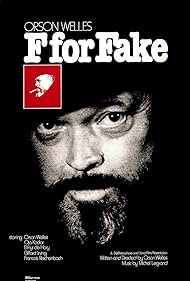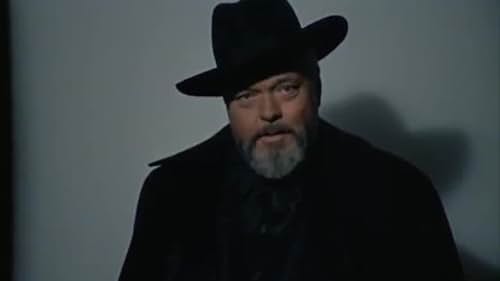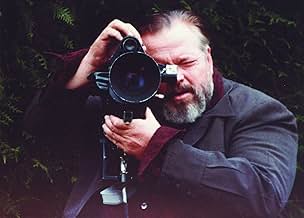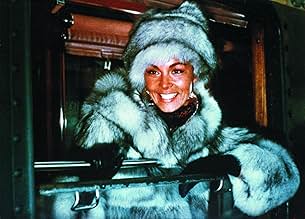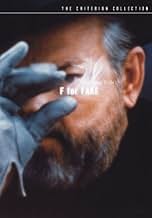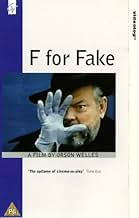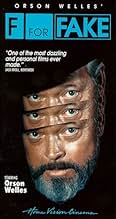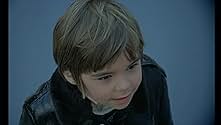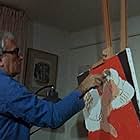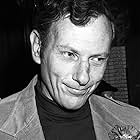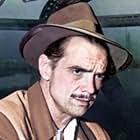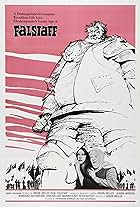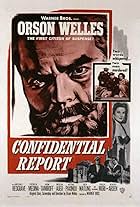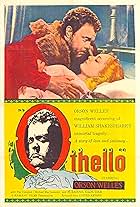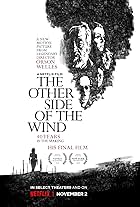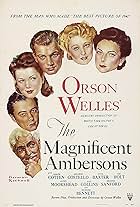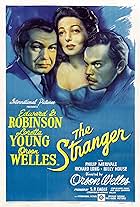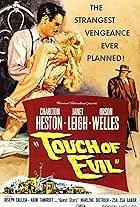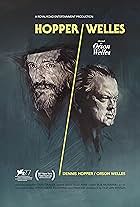A documentary about fraud and fakery.A documentary about fraud and fakery.A documentary about fraud and fakery.
- Awards
- 3 wins
Orson Welles
- Self - Narrator
- (voice)
Howard Hughes
- Self
- (archive footage)
Alexander 'Sasha' Welles
- Self
- (as Sasa Devcic)
Andrés Vicente Gómez
- Special Participant
- (as Andres Vincente Gomez)
Storyline
Did you know
- TriviaOrson Welles filmed a trailer that lasted nine minutes and featured several shots of a topless Oja Kodar. The trailer was rejected by the US distributors.
- GoofsThe word "practitioners" is misspelled "practioners" in the opening credits.
- Quotes
Orson Welles: Our works in stone, in paint, in print, are spared, some of them, for a few decades or a millennium or two, but everything must finally fall in war, or wear away into the ultimate and universal ash - the triumphs, the frauds, the treasures and the fakes. A fact of life: we're going to die. "Be of good heart," cry the dead artists out of the living past. "Our songs will all be silenced, but what of it? Go on singing." Maybe a man's name doesn't matter all that much.
- ConnectionsEdited into Orson Welles' F for Fake Trailer (1976)
Featured review
Orson Welles completely changed the face of film with "Citizen Kane." It was precisely right to spawn the revolution in narrative layering. For those who don't know, the Kane experiment was initiated not by Welles but Mankiewicz. But it was Welles who expanded and pulled off the success of managing so many types of narrative layers. (The number and type would be later exceeded by "Annie Hall," but no one would consider it a triggering idea by then.) I don't think Kane was his best film, but it certainly was his most influential, and as such it haunted him all his life. Especially haunting were all the types of layers he discovered after Kane. As he only had that one shot at greatness, it would have been great if he could go back and remake it, adding the new ideas. This project is the next best thing. But to see its beauty, you have to know two things: first that the layers that Kane is missing and that many filmmakers used since is the notion of annotative narrative layers. Second, you should know that several of his "lost" projects exploit just this notion, especially "Other Side of the Wind." Here's the setup in this fake documentary about fakery: You have the layer of Kane, which is based on Hearst. (A story about a storyman.) Now Welles adds the (completely bogus) layer that Kane was to be originally about Howard Hughes, a more intrinsically layered character. (This remark, incidentally, is what triggered Scorcese's interest.) Then to Welles' bogus movie about Hughes' life (itself a bogus notion) he adds another layer: Irving's bogus story about Hughes' life. But he doesn't stop there. Indeed, he goes further into another layer: an Irving story (presumably _not_ bogus) about an artist (Elmyr) who produced bogus artworks, including bogus Picassos. The first two thirds of the project are concerned with getting all these plates spinning at the same time. Some very clever editing is used to merge the layers, even though nearly all the camera-work is mundane. The final third takes all these and weaves another layer that intersperses. It begins with the image of a lovely woman to whom he introduced us in the very beginning. It was a seemingly inexplicable introduction: candid shots of men on the street ogling her vampish walk. This woman is Oja Kodar (aka Olga Palinkas), Welles' lover, companion and screen writing collaborator on all his folded projects all lost except this one. Around this woman, Welles conflates every layer you have seen before into a story about her seducing Picasso into painting 22 pictures of her, presumably nude, of which he makes her a gift. She subsequently sells Picassos which turn out to have been produced by her grandfather, Elmyr who we saw earlier. In the earlier shots, we actually see him produce bogus paintings which are then burned. But in Welles' confabulation, the originals are burned and the fakes sold. (You should know that in the lore of folded narrative (which goes through cabala to Finnigans Wake), there are exactly 22 folds you can make and no more.) Things are tied together with Orson admitting to being a fake, and the story a fake, but perhaps necessary in the name of art? No one should see "Citizen Kane" without also seeing this annotation. Ted's Evaluation -- 3 of 3: Worth watching.
- How long is F for Fake?Powered by Alexa
Details
Box office
- Gross worldwide
- $10,206
- Runtime1 hour 29 minutes
- Sound mix
- Aspect ratio
- 1.66 : 1
Contribute to this page
Suggest an edit or add missing content

